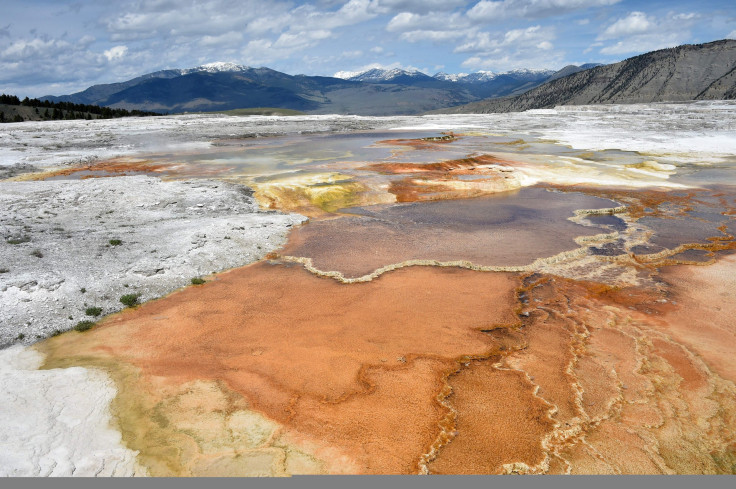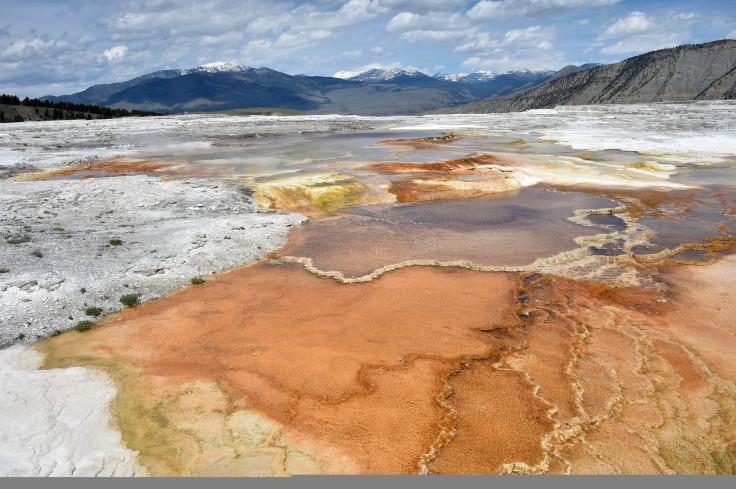When Will Yellowstone's Supervolcano Erupt? Park Has 878 Earthquakes In 2 Weeks

Yellowstone National Park sits perched atop one of the United States' two super volcanoes — a volcano covering more than 240 cubic miles. The volcano beneath Yellowstone is active, with evidence appearing each time its famous Old Faithful geyser bubbles up. And over the past month, the park has had 878 earthquake events in what’s known as an “earthquake swarm.”
So what does that mean for the future of the country’s largest volcano? Fortunately, such swarms are common and don’t mean the volcano is about to erupt anytime soon.
Read: Mount Etna Volcano Eruption Caught On Video
“This is the highest number of earthquakes at Yellowstone within a single week in the past five years,” scientists from the University of Utah, which tracks Yellowstone’s activity, told the Star Valley Independent earlier in June. “But is fewer than weekly counts during similar earthquake swarms in 2002, 2004, 2008 and 2010.”

Small earthquakes don’t indicate impending doom: over the past two million years, there have been only three major eruptions in Yellowstone, according to the National Park Service. The Yellowstone volcano last erupted about 174,000 years ago, creating what’s called West Thumb of Yellowstone Lake.
Scientists from the Yellowstone Volcano Observatory continuously monitor seismic activity at the park in an effort to detect any sudden shifts in heat or movement that would indicate a greater level of activity. Scientists noted that by constantly observing the area, they might be able to give advance warning for a catastrophic eruption of up to months in advance. So far, the site has remained stable.
“Current geological activity at Yellowstone has remained relatively constant since scientists first started monitoring more than 30 years ago,” the National Park Service said on its website. “Another caldera-forming eruption is theoretically possible but is very unlikely in the next thousand or even 10,000 years. Scientists have also found no indication of an imminent smaller eruption of lava.”
The United States Geological Survey also said there is no imminent risk of a massive eruption: The USGS listed the current alert level as normal and the aviation risk level at green, which marks no potential risk to flights.
Scientists are, however, almost certain that the volcano will be active in the future.
“Yellowstone’s 2-million-year history of volcanism, the copious amount of heat that still flows from the ground, the frequent earthquakes and the repeated uplift and subsidence of the caldera floor also testify to the continuity of magmatic processes beneath Yellowstone and point to eh possibility of future volcanism and future earthquake activity,” the USGS said on its website.
Read: San Andreas Fault Could Cause California Coast To Instantly Sink Below Sea Level
If and when a major eruption does occur, it could have far-reaching and potentially devastating consequences. A supervolcano eruption could blanket parts of the country with up to four inches of crop-destroying gray ash, cause acid rain and deflect the sun away from the earth, leading to a potential global cooling event.
None of which will likely be seen in our lifetime.
“Scientists do not have any indication of an imminent eruption, or any eruption, at this time,” said the National Park Service.

SaveSave
© Copyright IBTimes 2024. All rights reserved.





















